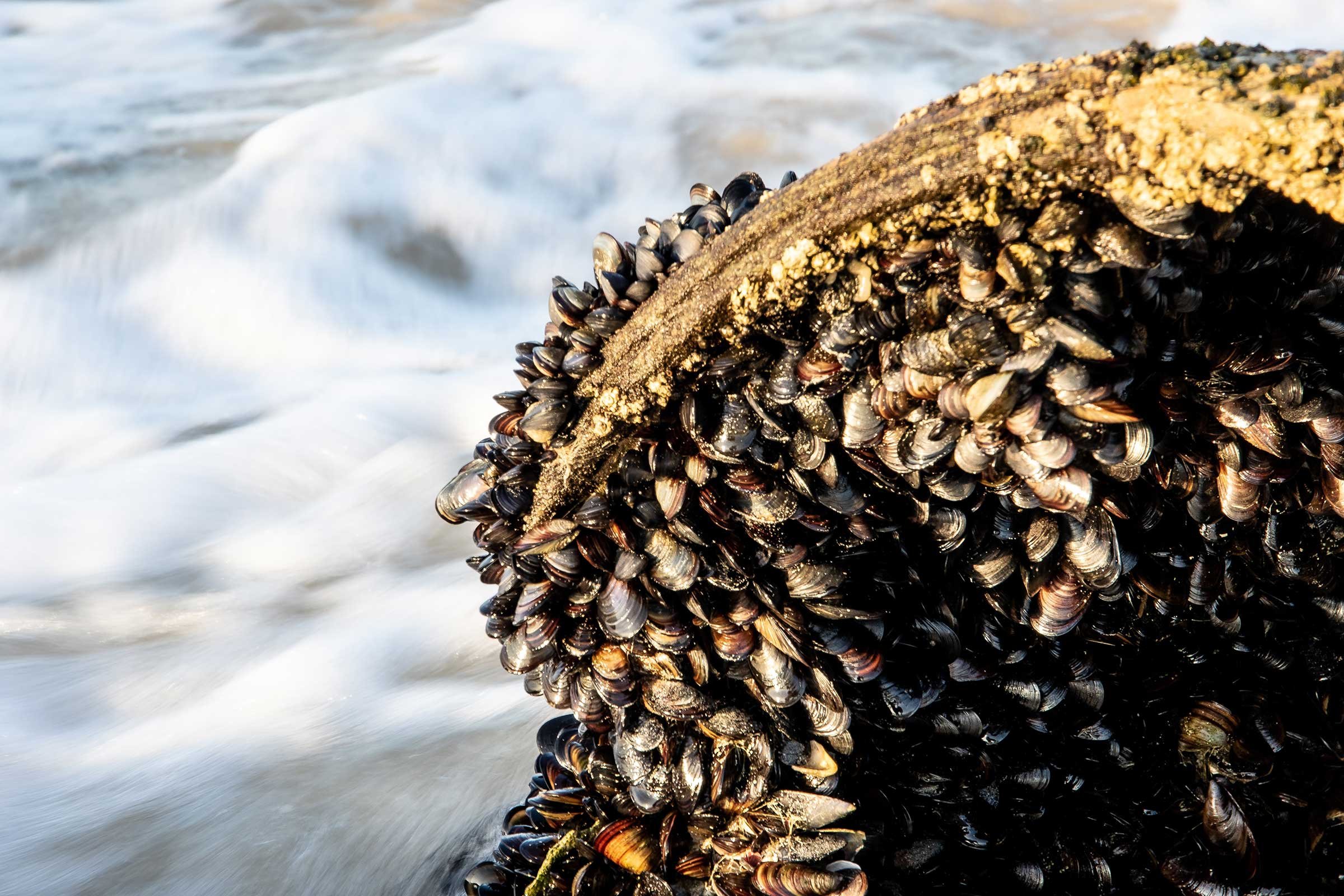Flex those Mussels

Gifts from the Sea in Sturdy Packages
by Holly Madrigal
One of the most easily harvested local treasures is the mussels that encrust the shoreline, visible all over the rocks, especially at low tide. But as with any wild foods, it pays to be smart and to research what you are eating before you bite. Wild forage at your own risk. Ask questions from locals and heed their advice.
Good rules of thumb:
Only eat mussels in months with an “R,” avoiding the summer when toxic algaes can bloom and the mussels are spawning, which can alter the taste.
There is often a quarantine period from May to October to avoid paralytic shellfish poisoning—NOT something to mess around with. Call the California Shellfish Biotoxin Information Line at 1-800-553-4133 just to be extra cautious and ensure that the area you are foraging is safe.
Double check that the waters and the weather are safe at the time that you plan to forage.
Go at low tide, as mussel beds form on rocks at the tideline. Respect the ocean and keep your wits about you.
Once you’ve done your research, it’s time to try harvesting and enjoying these small shellfish delicacies. You can pick up a fishing license at one of the local shops, or purchase one online. (If you don’t have a license, you can be fined by Fish & Wildlife.) This license will allow you to forage up to 10 pounds of the mollusc, with this caveat: You are not allowed to use tools, so bring strong gloves and a bucket to hold your goodies.
To prepare your harvest, place the mussels in a colander and run water over them, using your hands or a stiff brush to rub off any debris like seaweed, sand, barnacles, or mud spots that could be on the shell. If you find any mussels with open shells, lightly tap that mussel against the side of the sink. If the mussel closes up again in response to this stimulus, it’s alive. If it doesn’t respond, discard it.
The beard of a mussel is the clump of hair-like fibers that sprouts from the shell. To remove the beard from the mussel, grab it with your thumb and forefinger and tug it toward the hinge of the mussel shell. You can also use a knife to gently scrape away the beard.
Once your mussels are cleaned and debearded, they’re ready to cook and eat. Try them in a white wine sauce, served with crusty bread. Slather them in aioli or melted butter. Or, try the delicious recipe that follows.
Drunken Mussels
This easy recipe is quick and delicious. Just bring a flavorful, wine-based broth to a boil, add mussels and cover, cook until they open, and eat. Yum!
Ingredients
2 Tbsp butter
4 cloves garlic, minced
½ tsp red pepper flakes, or to taste
1 lemon, zested
2 c white wine
Freshly ground black pepper to taste
2 pounds mussels, cleaned and debearded
1 cup chopped fresh flat-leaf parsley
2 slices bread, grilled
2 lemon wedges for garnish
Directions
Melt butter in a large stock pot over medium heat. Add garlic and let sizzle for about 30 seconds. Season with red pepper flakes and lemon zest, stirring for about 45 seconds.
Quickly pour wine into the pan and season with black pepper. Bring to a boil, stir in mussels, and cover immediately. Shake the pot and let boil for 1 minute.
Stir again, replace the cover, and let it boil for 2 more minutes. The shells will begin to open. Stir in parsley, cover the pot, and simmer until all the shells are open, 1 to 3 minutes.
Serve with grilled bread and lemon wedge.
Photo by Magda Ehlers courtesy of Pexels.
